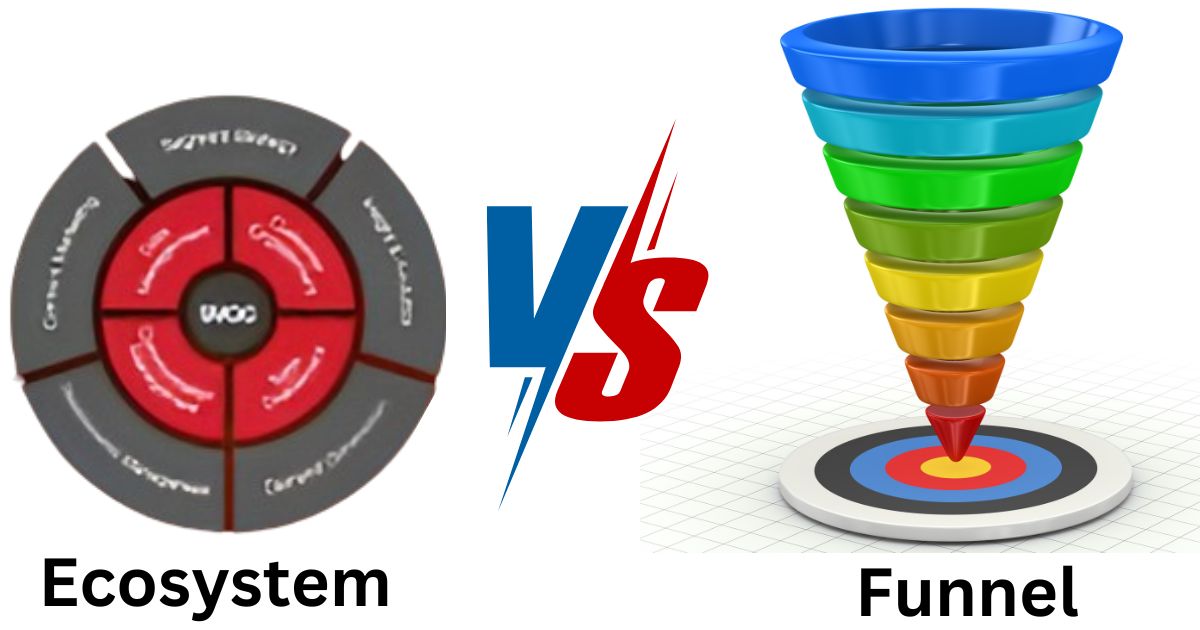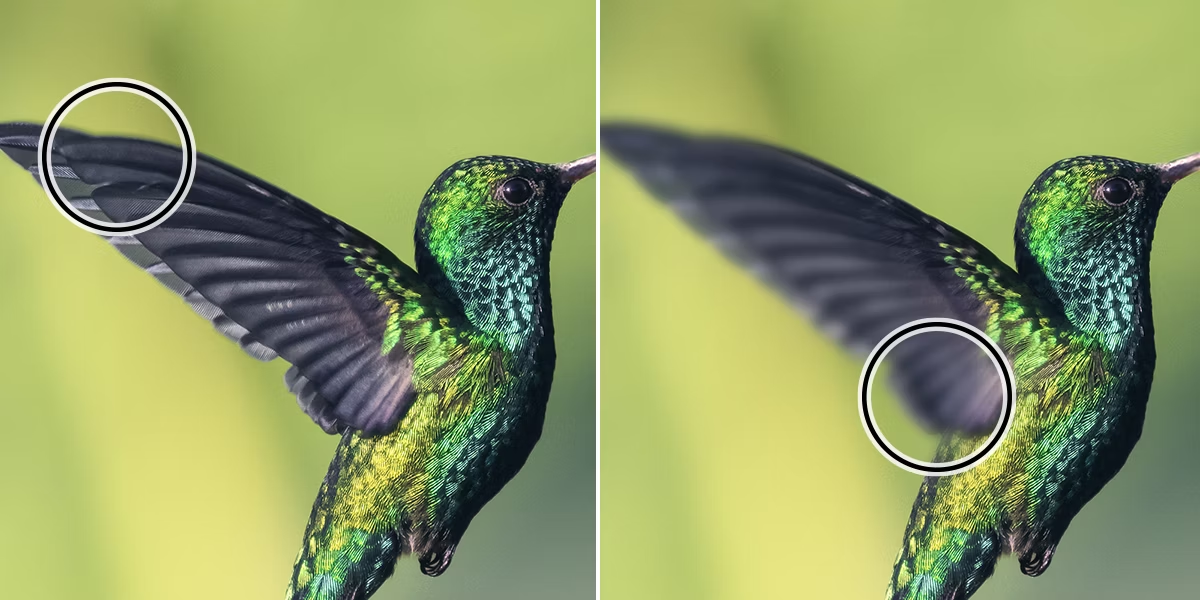In the modern business landscape, choosing the right strategy for growth is crucial. Two prominent models often debated are the Ecosystem vs Funnel models. Understanding these models’ intricacies can significantly impact a company’s trajectory. The Ecosystem Model focuses on creating a network of interconnected stakeholders, fostering a collaborative environment that promotes long-term growth. In contrast, the Funnel Model emphasizes a streamlined approach to lead conversion, aiming for efficiency and immediate results. This article explores the fundamental differences between these models, their benefits and challenges, and which might be better suited for various business objectives.
Understanding the Ecosystem Model
What is the Ecosystem Model?
The Ecosystem Model is a strategic approach that centers around creating a network of interconnected entities, including customers, partners, and suppliers. This model thrives on mutual relationships and collaboration, aiming to build a robust environment where all participants benefit from each other’s success. Key characteristics of the Ecosystem Model include its focus on long-term relationships and a holistic view of the business environment. Companies like Apple and Amazon exemplify this model by creating expansive ecosystems that integrate various products and services, enhancing user experience and loyalty.
Benefits of the Ecosystem Model
One of the significant advantages of the Ecosystem Model is its potential for long-term growth. By fostering a collaborative network, businesses can leverage shared resources and expertise, driving innovation and expanding their market reach. Enhanced customer engagement is another benefit, as the model encourages continuous interaction and feedback, leading to improved products and services. Furthermore, ecosystems can create strong network effects, where the value of the product or service increases as more participants join, amplifying growth opportunities and competitive advantage.
Challenges of the Ecosystem Model
Despite its benefits, the Ecosystem Model comes with its challenges. Managing a complex network of stakeholders can be difficult, requiring robust coordination and communication strategies. Integration issues may also arise, particularly when aligning diverse systems and processes within the ecosystem. These challenges necessitate a strategic approach to ensure that all parties involved work harmoniously towards common goals, balancing the benefits of collaboration with the complexities of managing a multifaceted business environment.
Understanding the Funnel Model
What is the Funnel Model?
The Funnel Model is a marketing and sales strategy that visualizes the customer journey as a funnel-shaped process. It focuses on guiding potential customers through various stages, from awareness to decision-making, with the ultimate goal of conversion. This model is characterized by its clear, linear approach and emphasis on optimizing each stage of the funnel to maximize conversion rates. Companies often use the Funnel Model to streamline their sales processes, ensuring that leads are efficiently nurtured and converted into customers.
Benefits of the Funnel Model
The Funnel Model offers several benefits, primarily its focus on clear conversion metrics. By breaking down the customer journey into distinct stages, businesses can easily track and measure performance, identifying areas for improvement and optimization. This streamlined approach enhances sales efficiency, as it provides a structured path for leads to follow, reducing the likelihood of missed opportunities. Additionally, the Funnel Model allows for targeted marketing strategies tailored to each stage, improving the effectiveness of promotional efforts and increasing the likelihood of conversion.
Challenges of the Funnel Model
While the Funnel Model is effective for driving immediate results, it also has its limitations. One major challenge is its short-term focus, which may not account for long-term customer retention and relationship building. The model’s linear nature can sometimes oversimplify the customer journey, failing to address the complexities of customer behavior and decision-making. Additionally, a heavy emphasis on conversion optimization can lead to a neglect of other critical aspects, such as customer experience and post-purchase support, which are essential for sustaining growth.
Comparing Ecosystem vs Funnel Models
Key Differences Between Ecosystem vs Funnel Models
The Ecosystem vs Funnel Models differ significantly in their approach to customer acquisition and lifecycle management. The Ecosystem Model emphasizes building a collaborative network, fostering long-term relationships, and creating a comprehensive environment that benefits all participants. In contrast, the Funnel Model focuses on guiding leads through a structured process, aiming for efficient conversion and immediate results. These differences reflect distinct strategic priorities: ecosystems prioritize sustained growth and engagement, while funnels emphasize streamlined processes and measurable outcomes.
Also Read: Websites for Employees
Which Model is More Scalable?
Scalability is a critical factor when comparing the Ecosystem vs Funnel Models. Ecosystem models tend to offer greater scalability due to their ability to expand and adapt as the network grows. The collaborative nature of ecosystems allows for continuous integration of new participants, creating opportunities for innovation and market expansion. On the other hand, while Funnel Models can be effective for driving growth in the short term, they may face limitations as the business scales, particularly if the focus remains solely on optimizing conversion rates without addressing broader strategic considerations.
Cost Considerations for Each Model
Cost considerations play a significant role in choosing between the Ecosystem vs Funnel Models. The Ecosystem Model may require a higher initial investment, as it involves creating and managing a complex network of stakeholders. However, the long-term benefits, such as enhanced customer loyalty and market expansion, can offset these costs. The Funnel Model, while potentially less expensive to implement initially, may involve ongoing costs related to optimizing and maintaining the funnel stages. Businesses must weigh these costs against the expected benefits to determine the most cost-effective strategy for their specific goals.
Impact on Business Growth
How Ecosystem Models Drive Long-Term Growth
Ecosystem models are particularly effective at driving long-term growth by leveraging network effects and fostering collaborative relationships. The value of the ecosystem increases as more participants join, creating a positive feedback loop that amplifies growth opportunities. Additionally, ecosystems encourage continuous interaction and innovation, leading to the development of new products and services that cater to evolving market needs. This long-term focus on relationship building and mutual success helps businesses sustain growth and adapt to changing market conditions.
How Funnel Models Drive Growth
Funnel models drive growth by optimizing each stage of the customer journey, from awareness to decision-making. By focusing on clear conversion metrics and streamlining processes, businesses can efficiently nurture leads and maximize conversion rates. This approach enhances sales efficiency and enables targeted marketing strategies that resonate with potential customers. While the Funnel Model may prioritize short-term results, its effectiveness in driving immediate growth can be valuable for businesses seeking to achieve rapid success and establish a strong market presence.
Case Studies
Successful Ecosystem Model Examples
Example 1: Company A
Company A exemplifies the success of the Ecosystem Model by creating a comprehensive network of products and services that cater to diverse customer needs. By integrating various offerings and fostering partnerships with other companies, Company A has built a robust ecosystem that enhances customer experience and drives long-term growth. The company’s focus on collaboration and innovation has enabled it to expand its market reach and maintain a competitive edge in the industry.
Example 2: Company B
Company B has also achieved success with the Ecosystem Model by leveraging its extensive network of partners and stakeholders. The company’s ecosystem approach has facilitated the development of new solutions and services, driving customer engagement and loyalty. By creating a collaborative environment that benefits all participants, Company B has been able to sustain growth and adapt to evolving market trends.
Successful Funnel Model Examples
Example 1: Company C
Company C demonstrates the effectiveness of the Funnel Model through its streamlined sales process and focus on conversion optimization. By clearly defining each stage of the funnel and implementing targeted marketing strategies, Company C has achieved impressive results in lead nurturing and conversion rates. The company’s ability to measure and refine its funnel processes has contributed to its rapid growth and market success.
Example 2: Company D
Company D has utilized the Funnel Model to drive growth by efficiently guiding leads through the customer journey. The company’s emphasis on clear conversion metrics and process optimization has enabled it to achieve significant results in sales and customer acquisition. By continuously refining its funnel strategy, Company D has been able to maintain a strong market presence and drive sustained growth.
Implementing the Right Model
Assessing Your Business Needs
Before choosing between the Ecosystem vs Funnel Models, it’s essential to assess your business needs and objectives. Key questions to consider include: What are your primary growth goals? Are you focused on long-term relationships or immediate results? Understanding your business’s unique requirements will help determine which model aligns best with your strategic priorities and growth ambitions.
Steps to Implement an Ecosystem Model
- Planning and Strategy: Begin by developing a comprehensive strategy that outlines your ecosystem’s goals, key stakeholders, and integration plans. Identify potential partners and collaborators, and establish a clear vision for how the ecosystem will operate.
- Execution and Integration: Implement the ecosystem strategy by building relationships with stakeholders and integrating systems and processes. Ensure effective communication and collaboration to foster a thriving network that benefits all participants.
Steps to Implement a Funnel Model
- Designing the Funnel: Create a well-defined funnel that outlines each stage of the customer journey, from awareness to decision-making. Develop targeted marketing strategies for each stage to effectively guide leads through the funnel.
- Monitoring and Optimization: Continuously monitor the performance of your funnel and make data-driven adjustments to optimize conversion rates. Use analytics and feedback to refine your approach and enhance overall effectiveness.
Future Trends and Innovations
Emerging Trends in Ecosystem Models
The Ecosystem Model is evolving with technological advancements and shifting customer expectations. Emerging trends include the integration of artificial intelligence and machine learning to enhance ecosystem management and collaboration. Additionally, businesses are focusing on creating more personalized and adaptive ecosystems that cater to individual customer needs and preferences.
Emerging Trends in Funnel Models
The Funnel Model is also undergoing transformation with the adoption of new technologies and data-driven approaches. Innovations such as advanced analytics and automation are enhancing funnel efficiency and effectiveness. Companies are increasingly focusing on creating more dynamic and responsive funnels that adapt to changing customer behavior and preferences.
Conclusion
In conclusion, both the Ecosystem vs Funnel Models offer unique advantages and challenges, making them suitable for different business objectives and growth strategies. The Ecosystem Model excels in fostering long-term relationships and collaborative networks, driving sustained growth and innovation. The Funnel Model, on the other hand, provides a streamlined approach to lead conversion and immediate results. Ultimately, the choice between these models depends on your business’s specific needs, goals, and strategic priorities.










